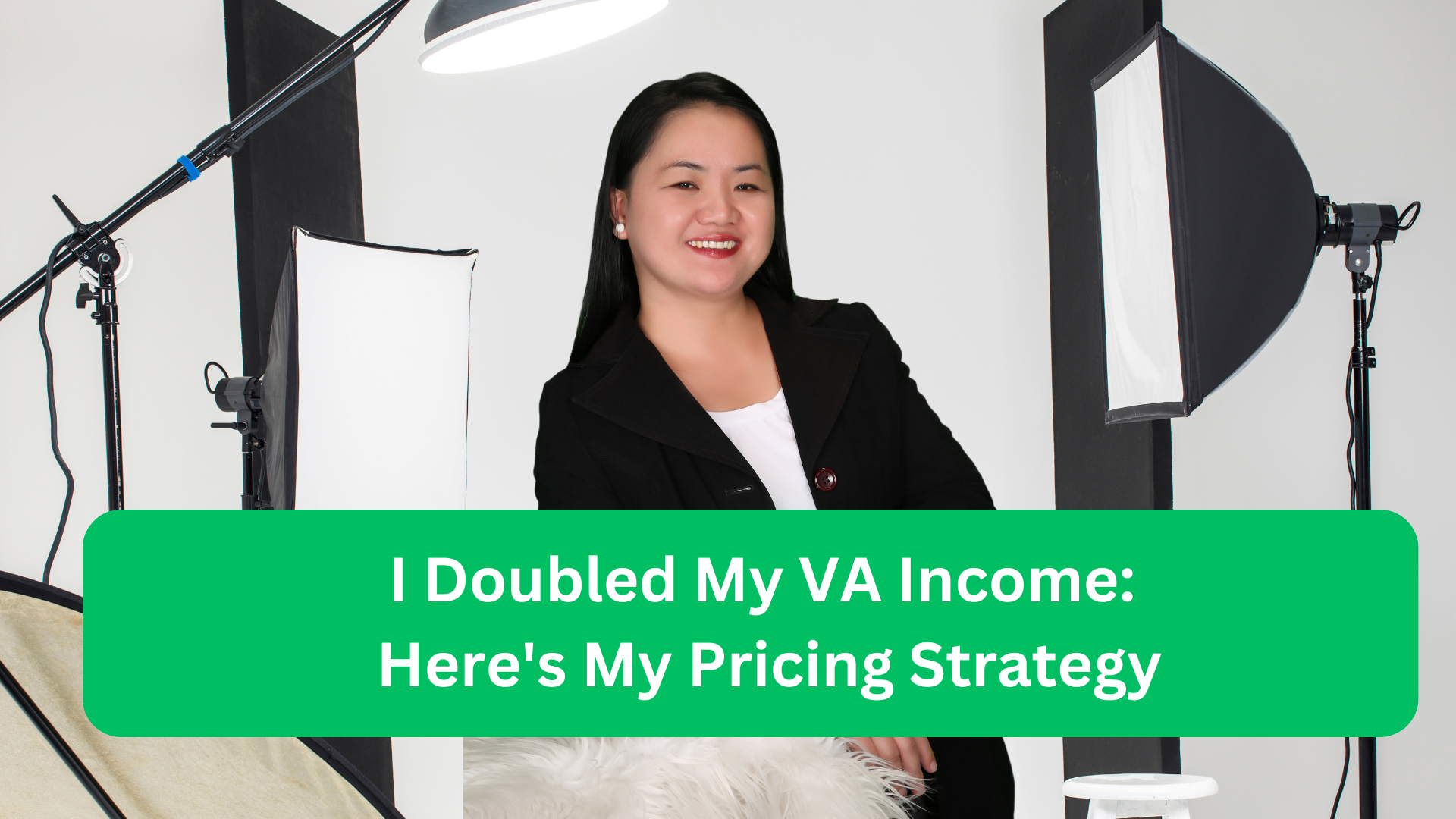The question of pricing is a constant source of anxiety and uncertainty for many Filipino Virtual Assistants (VAs). We pour our hearts and skills into our work, but figuring out how much to charge can feel like navigating a minefield. Undersell yourself, and you’re leaving money on the table. Oversell, and you risk losing potential clients. Finding that sweet spot – a rate that reflects your value while remaining competitive – is crucial for long-term success. This guide aims to demystify the process, offering practical advice on setting competitive rates as a Filipino VA.
Understanding the Landscape: Factors Influencing Your Rates
Several factors come into play when determining your pricing. There’s no one-size-fits-all answer, as each VA brings a unique set of skills and experience to the table. Here’s a breakdown of the key elements to consider:
- Skills and Expertise: The more specialized and in-demand your skills, the higher you can generally charge. A VA proficient in advanced project management or specialized software can command higher rates than someone offering basic administrative support. Consider the level of expertise required for the tasks you handle. Are you an expert in your field, or are you still developing your skills?
- Experience: Years of experience play a significant role in pricing. A seasoned VA with a proven track record of success can justify higher rates than a newbie just starting out. Clients are often willing to pay more for the peace of mind that comes with experience.
- Market Demand: The demand for specific VA services fluctuates. Research the current market to understand which skills are in high demand and which are more common. If your skills are scarce, you have more leverage in setting your rates.
- Complexity of Tasks: Simple, repetitive tasks generally command lower rates than complex, strategic projects. Consider the time, effort, and level of critical thinking required for the tasks you’re offering.
- Target Market: Who are your ideal clients? Small businesses, startups, or large corporations? The type of client you target can influence your pricing strategy. Larger corporations may have bigger budgets, while smaller businesses may be more price-sensitive.
- Cost of Living (Considered, But Not the Sole Factor): While the cost of living in the Philippines is generally lower than in many Western countries, it shouldn’t be the only factor determining your rates. You’re providing a professional service, and your skills have value regardless of your location. Focus on the value you provide, not just your location.
- Business Expenses: Don’t forget to factor in your business expenses, such as internet costs, software subscriptions, equipment, and professional development. Your rates should cover these expenses and allow you to make a profit.
Pricing Models: Finding What Works Best for You
Several pricing models are commonly used by VAs. Understanding these models will help you choose the one that aligns best with your services and business goals:
- Hourly Rate: This is a common model, especially for ongoing tasks or projects with variable workloads. It’s essential to track your time accurately to ensure you’re compensated fairly.
- Project-Based Rate: For well-defined projects with a clear scope, a fixed project rate can be beneficial. This model provides predictability for both you and the client. However, it’s crucial to thoroughly understand the project requirements before setting a fixed price to avoid scope creep.
- Retainer Fee: A retainer fee involves charging a client a fixed monthly fee for a set number of hours or specific services. This model provides a stable income stream and is often used for ongoing support.
- Value-Based Pricing: This model focuses on the value you bring to the client’s business, rather than just the time you spend on tasks. It requires a deep understanding of the client’s needs and goals. Value-based pricing can command higher rates, but it also requires strong communication and negotiation skills.
Researching the Market: Understanding the Going Rate
Before setting your rates, it’s crucial to research the market and understand what other Filipino VAs with similar skills and experience are charging. Here are some resources to help you with your research:
- Online Job Boards and Freelance Platforms: Browse job postings and freelance platforms to see the rates being offered for similar VA roles.
- VA Communities and Forums: Join online communities and forums for Filipino VAs to connect with other professionals and discuss pricing.
- Salary Surveys and Reports: Look for industry salary surveys or reports that provide data on VA compensation.
- Networking: Connect with other VAs and ask about their pricing strategies.
Setting Your Rates: A Step-by-Step Approach
- Identify Your Niche and Target Market: What specific services do you offer, and who are your ideal clients?
- Assess Your Skills and Experience: Honestly evaluate your skills and experience level. Are you a beginner, intermediate, or expert?
- Research the Market: Use the resources mentioned above to research the going rate for your niche and experience level.
- Choose a Pricing Model: Select the pricing model that best suits your services and business goals.
- Calculate Your Costs: Factor in your business expenses, including internet, software, equipment, and professional development.
- Determine Your Desired Income: How much do you need to earn to meet your financial goals?
- Set Your Rates: Based on your research, costs, and desired income, set your rates. Don’t be afraid to start a little higher and adjust as needed.
- Be Prepared to Negotiate: Clients may try to negotiate your rates. Be confident in your value and be prepared to explain your pricing. However, also be willing to compromise if necessary.
- Review and Adjust Your Rates Regularly: The market and your skills are constantly evolving. Review your rates periodically to ensure they remain competitive and reflect your value.
Communicating Your Rates to Clients:
When communicating your rates to clients, be clear, concise, and professional. Explain your pricing structure and the value they will receive in return. Don’t be afraid to highlight your skills and experience. If you’re using an hourly rate, be transparent about how you track your time. If you’re using a project-based rate, provide a detailed scope of work.
Overcoming the Fear of Pricing:
Many Filipino VAs struggle with pricing, often undervaluing their services due to cultural norms or fear of rejection. It’s essential to remember that you are a professional providing a valuable service. Don’t be afraid to charge what you’re worth. Focus on the value you bring to your clients, not just the time you spend on tasks.
Building Confidence:
The more you practice pricing your services and communicating your rates to clients, the more confident you’ll become. Remember, you are a skilled professional, and you deserve to be compensated fairly for your work. By following the tips in this guide, you can confidently set competitive rates that reflect your value and contribute to your long-term success as a Filipino VA.







Leave a Reply